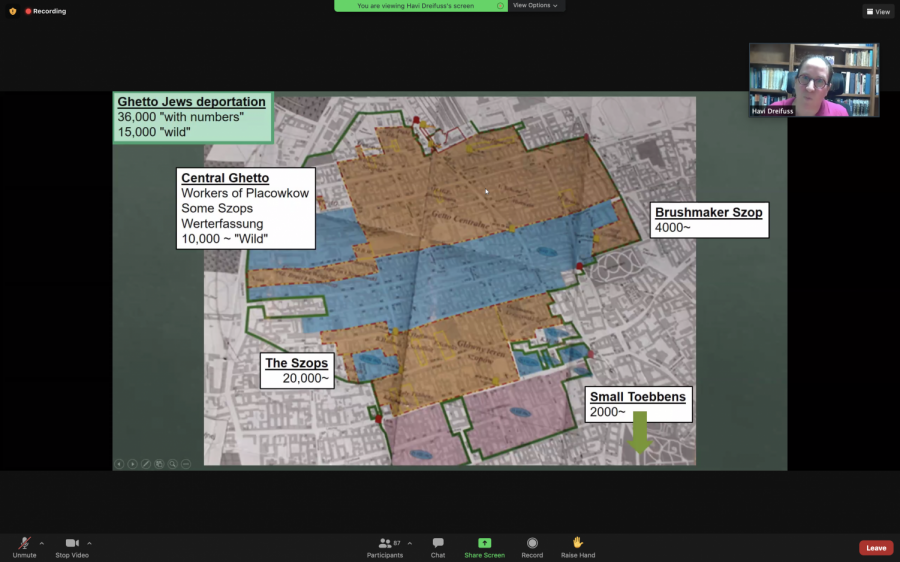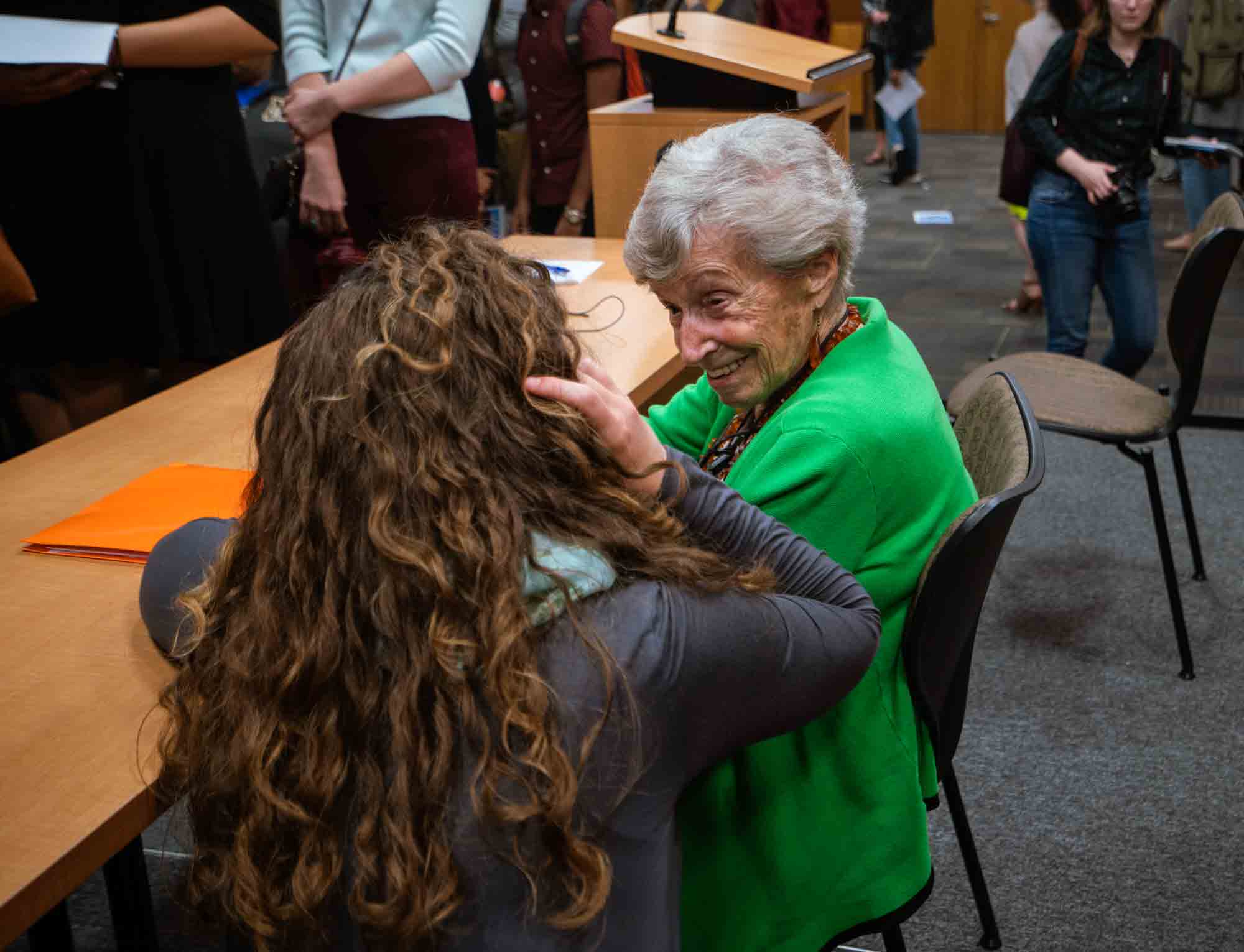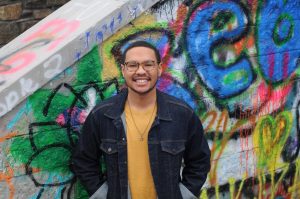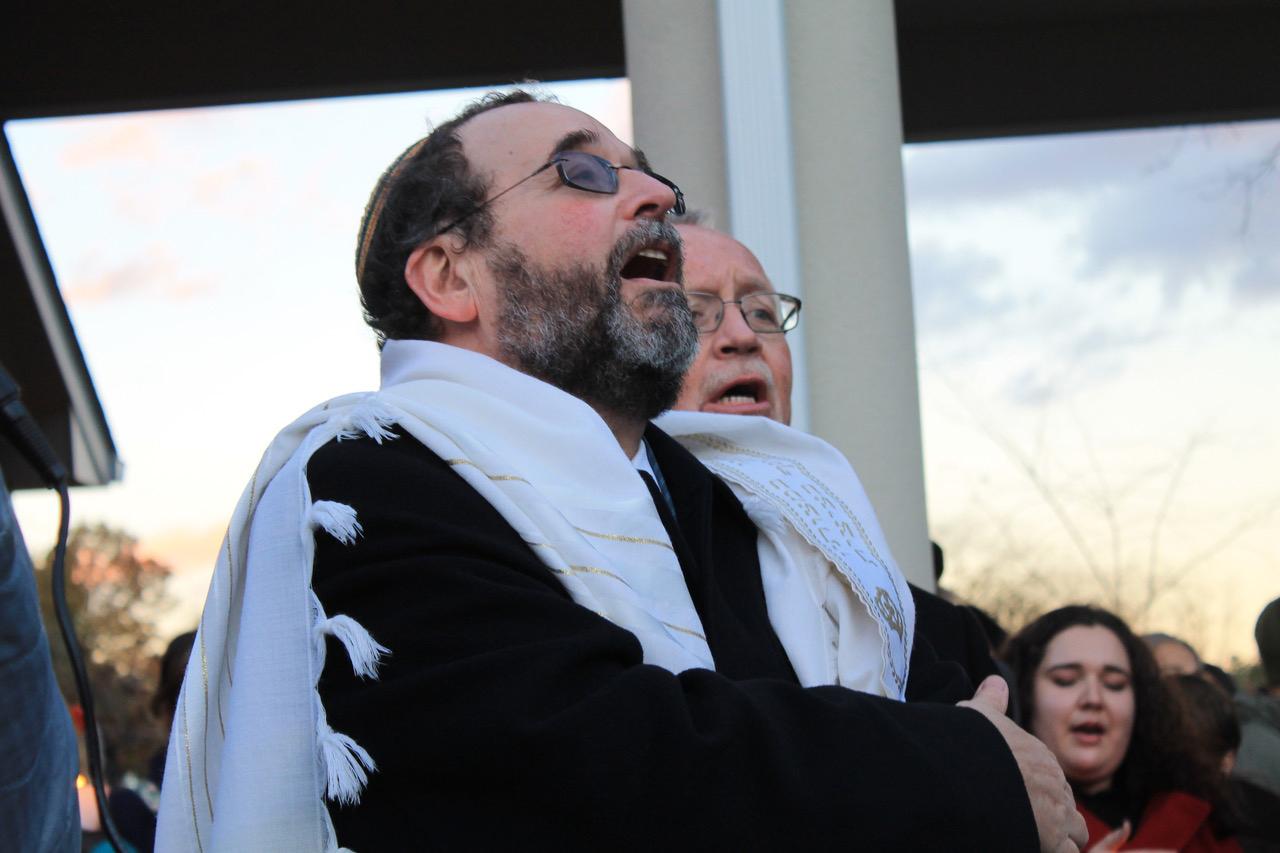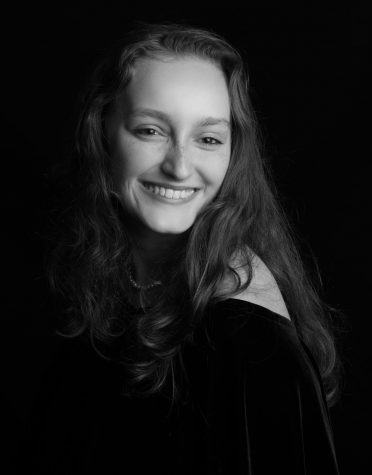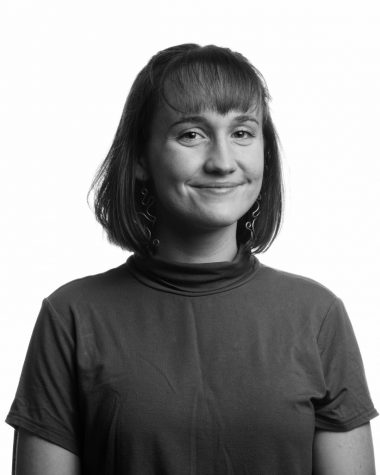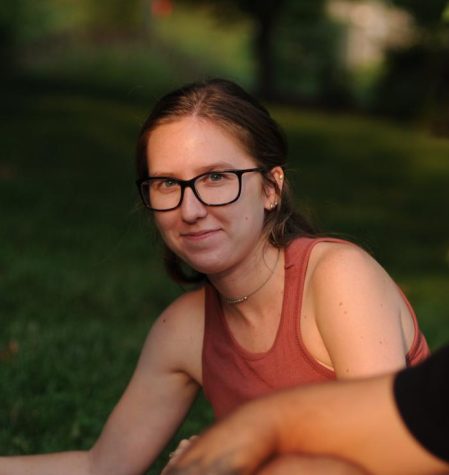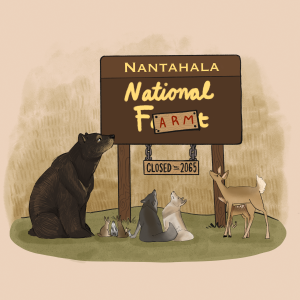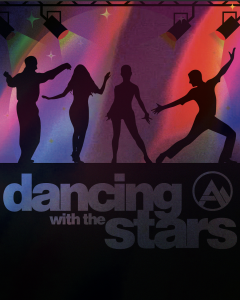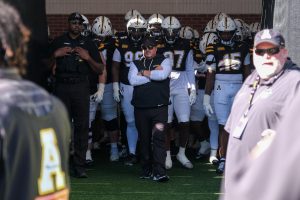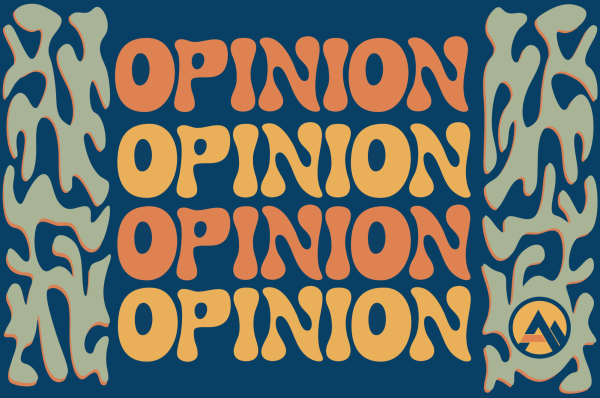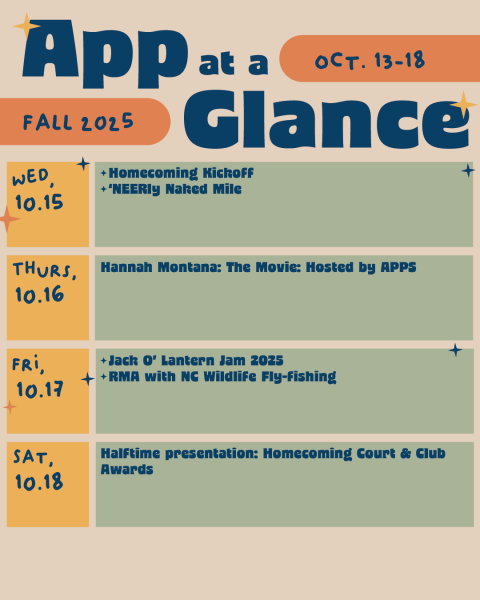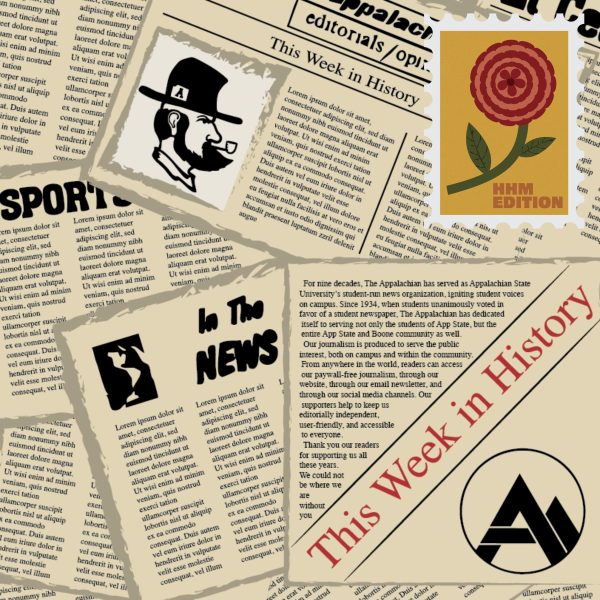Jewish organizations sponsor Holocaust scholar’s talk
Havi Dreifuss spoke on the uprising in the Warsaw Ghetto, using maps to explain how many people were in the city.
March 5, 2021
The Center for Judaic, Holocaust, and Peace Studies held a virtual lecture on Monday about the April 1943 uprising that took place in the Warsaw Ghetto in Poland during World War II.
Havi Dreifuss, a historian at Tel Aviv University and director of Yad Vashem’s Center for Research on the Holocaust in Poland, joined live from Israel to speak about her latest research on the uprising.
Yad Vashem is the World Holocaust Remembrance Center in Israel, and it works to preserve the memory of the Holocaust’s victims and heroes.
The event was co-sponsored by Hillel, a Jewish social club, and Alpha Epsilon Pi, a Jewish fraternity.
The Center for Judaic, Holocaust, and Peace Studies works to increase knowledge about Jewish culture and Holocaust history, in hopes that raising awareness will promote peace and prevent future genocides. One of the center’s main objectives is to have international scholars of Jewish or Holocaust Studies come on campus to speak. It is part of the center’s recent push over the last few years to internationalize its scope.
Dreifuss drew upon research from her latest book, titled “Warsaw Ghetto — The End (April 1942-June 1943),” which has just been accepted for publication and recently won the Shazar Prize for the Study of Jewish History.
Dreifuss discussed what day-to-day life was like for Jews during the April uprising in the Warsaw Ghetto. During the uprising, many Jews came together to form the Zydowska Organizacja Bojowa, or Jewish Combat Organization, which fought back against Nazi soldiers.
On April 19, 1943, the Schutzstaffel, an elite Nazi Corps, was sent into the Warsaw Ghetto to fight the ZOB. Several hundred ZOB resistance fighters were able to successfully fight off the Schutzstaffel for nearly a month, despite having little manpower and a limited number of smuggled weapons. The ZOB had formed as a reaction to the Nazi deportations of Jews to Treblinka, one of the major Nazi concentration camps.
Less than a month later, on May 16, 1943, the Nazis regained control of the Warsaw Ghetto. They blew up Warsaw’s Great Synagogue as a symbolic gesture.
“It’s surprising that anybody actually survived,” Thomas Pegelow Kaplan, director of the center, said of the uprising.“The entire ghetto was razed to the ground.”
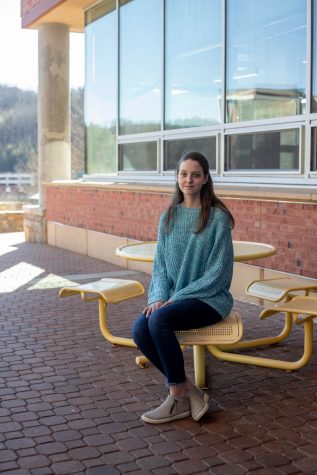
Dreifuss used a collection of photographs, diary entries and drawings to help illustrate what life was like in the Warsaw Ghetto during the uprising. Dreifuss even drew from diary entries of ZOB resistance fighters such as Zivia Lubetkin.
One excerpt from Lubetkin’s diary reads, “It was in this uprising that we fired our first shots. Jews realized that not only is it possible to kill Germans, but that you can even stay alive afterwards.”
“Of the thousands of men and women (living in the Warsaw Ghetto), old and young, the desire for resistance was born,” said Dreifuss of the ZOB resistance.
Cady Haller, public relations chair of Hillel, attended the lecture and spoke on its value.
“I think that learning about the Holocaust is extremely important. I think that especially now more than ever, with an increase in antisemitism, I think it needs to be learned about because we’ve already had this extreme. I’m scared we’re going to inch back towards it.”
Recently, there has been a recent rise in anti-Semitism, which the App State Jewish community has stood up to. These acts of resistance against anti-Semitism that are seen today seem to almost echo the acts of resistance that the Jews showed against the Nazis in 1943.
After talking about the resistance efforts, Dreifuss also focused on the hardships of life in the Warsaw Ghetto. She asked attendees to keep the “brutality of those days” in mind, and talked about how it can be difficult to hear some of the accounts of Holocaust survivors, the ones who “remembered the smell” and “remembered the sights” of the ghetto.
“Those descriptions are on one hand very important but on the other hand are really unbearable,” said Dreifuss. “(This lecture is) called the ‘Warsaw Ghetto – The End’ but this is, of course, not the end of the description of those days.”

